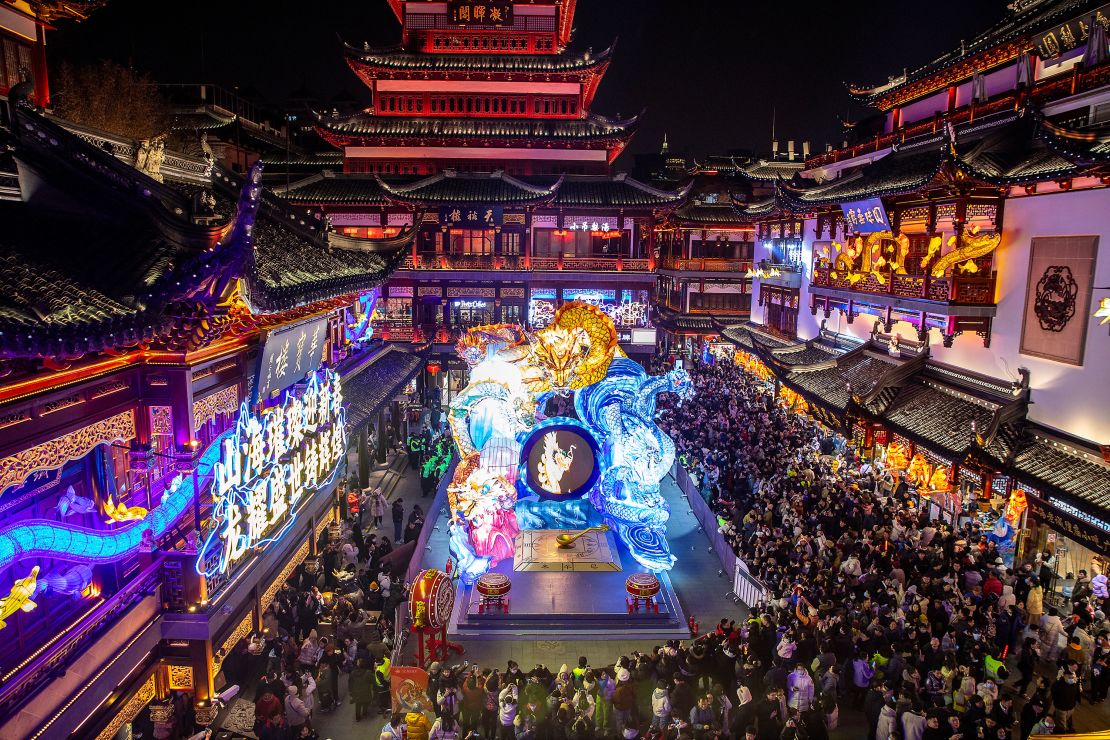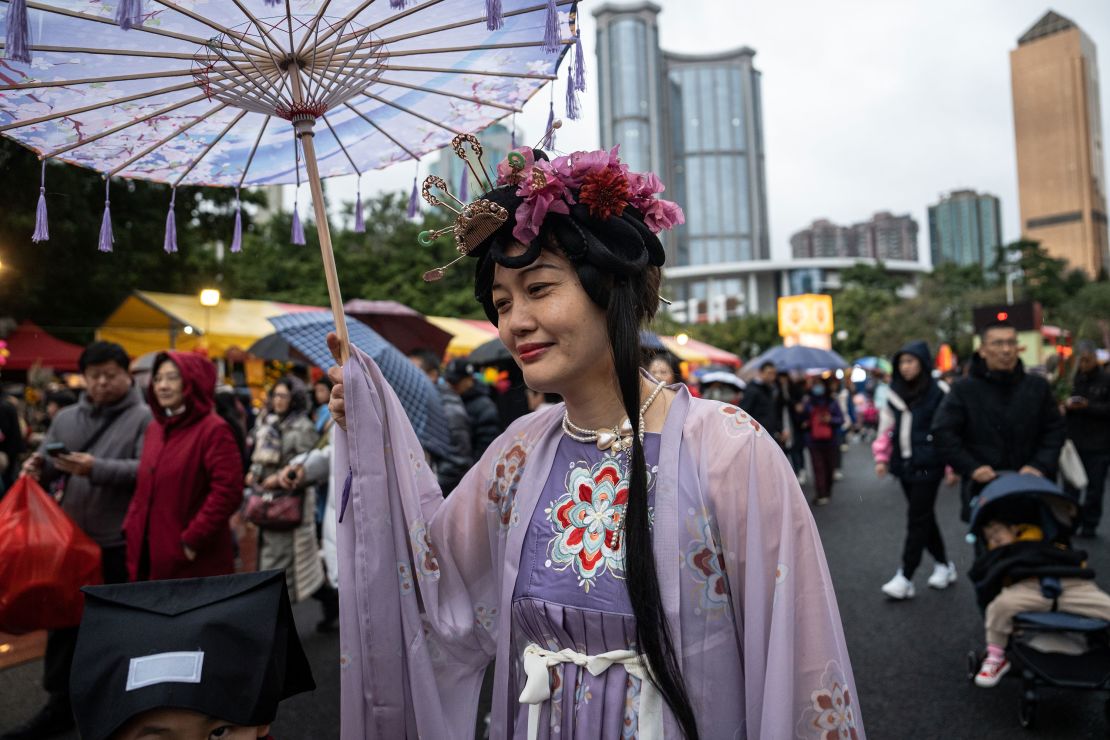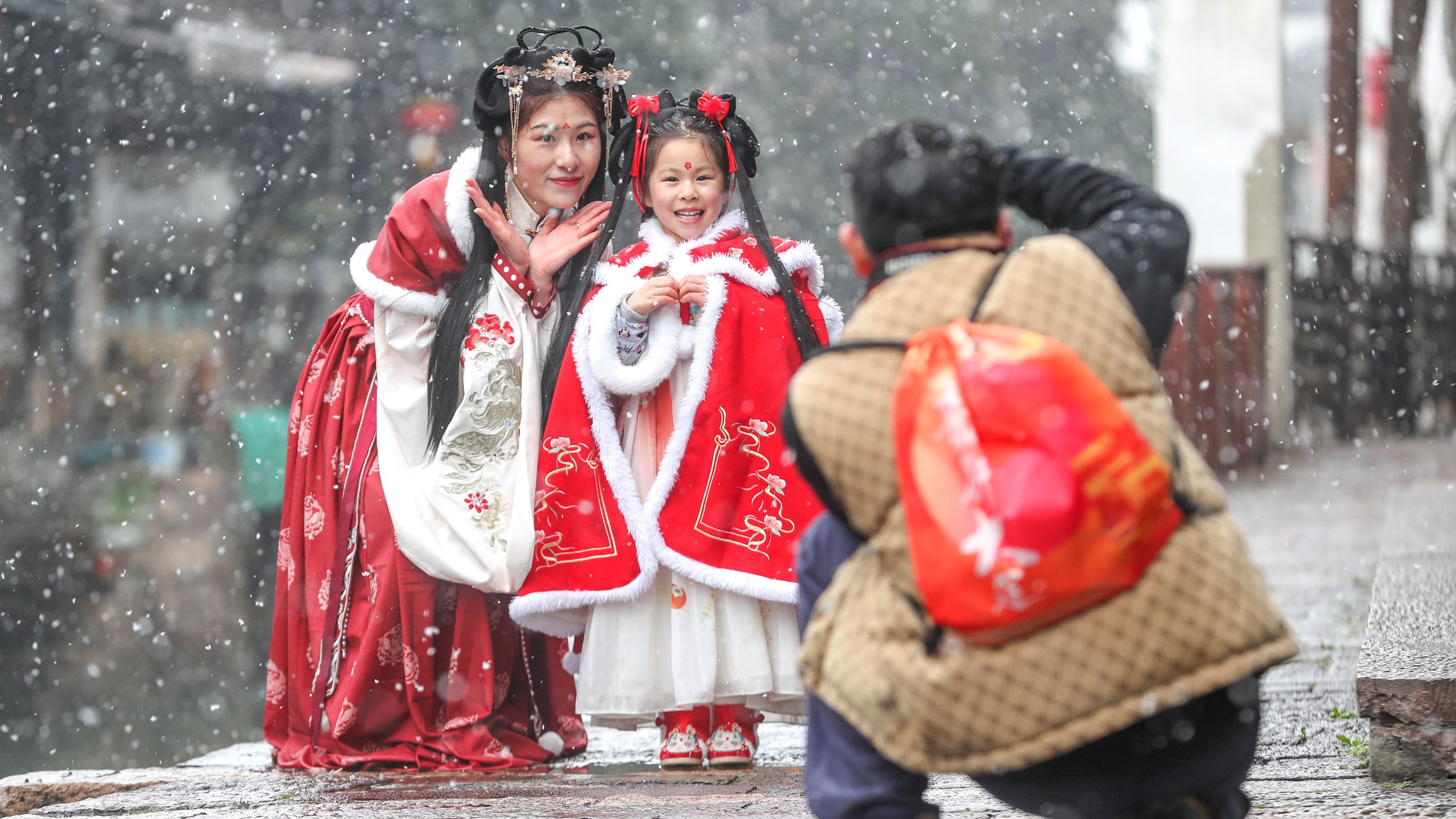Editor’s Note: This CNN Travel series is, or was, sponsored by the country it highlights. CNN retains full editorial control over subject matter, reporting and frequency of the articles and videos within the sponsorship, in compliance with our policy.
Tourists taking the metro in Suzhou, China, this week could be forgiven for feeling like they’ve traveled back in time a few centuries.
Famous for silk production and traditional gardens, this city of just over 10 million people, a 1.5-hour drive from Shanghai, is offering a week of free metro rides during the Lunar New Year period to passengers who dress in Hanfu – a style of clothing traditionally worn by ethnic-majority Han Chinese prior to the Qing dynasty (1644-1912).
The Suzhou Rail Transit’s offer isn’t random. Dressing up in traditional outfits to visit local attractions has become a popular way to express one’s holiday spirit in China in recent years, especially among youth, many of whom have been sharing images of their outings on social media this week.
So what exactly qualifies as Hanfu? There are many different styles of clothing inspired by multiple Chinese dynasties that could fall under this umbrella term, but most generally include a long, flowing cross-collar robe.
In 2019, CNN Style reported on the comeback of traditional Chinese fashion, noting that the Hanfu industry’s total market value at that time was estimated to be worth 1.09 billion yuan, according to state media.
Popularity reportedly tumbled during the pandemic, but a local media report says that interest in Hanfu has increased significantly in recent months. In January, in the run-up to the 2024 Spring Festival/Lunar New Year period, searches for modern Hanfu and silky Song brocade clothing on popular shopping website Taobao reportedly surged 683% and 2,058% respectively.
Multiple tourist sites in China now offer Hanfu rentals as well, some with makeup and hair styling services, similar to tourist attractions and historical sites in Seoul that rent out the traditional South Korean hanbok for visitors.
Tourist attractions come alive

For both domestic and international tourists, wearing these outfits while visiting historical or themed attractions can provide an added element of fun.
During the 15-day Spring Festival/Lunar New Year holiday, the busiest travel period of the year in China, many of these sites host colorful lantern displays, providing eye-catching backdrops for photos.
For instance, Yu Garden in Shanghai, which hosts a 40-day Spring Festival lantern fair, has become a popular destination for Hanfu fans. The nearby commercial shopping district of Wujiaochang even hosted a Lunar New Year Hanfu parade to attract revelers to the area this year.
In the capital city of China’s southern Hainan province, Haikou, lies Qilou Old Street, which features a fusion of Asian and European architecture from the 1920s. It too has seen an increase in young tourists wearing traditional attire during visits, according to one local.
“There are a lot more people – from visitors to tour guides to influencers – wearing Hanfu here at Haikou’s Qilou in these few years,” says Cai Pa, an area historian.
“[The rise of Hanfu] is an important symbol of the Chinese cultural renaissance. The younger generations are often the ones that are more open to new trends – and hence, the ones who are the first to embrace the rejuvenation of tradition.”
Cai tells CNN Travel it’s also getting more common to see people in other ethnic attires too, given the island province is home to several ethnic minority groups, the largest of which is the Li community.
Embracing tradition

Song Weixia, a 30-year-old brand designer from the mountainous province of Anhui who incorporates fashion elements inspired by Hanfu into her everyday outfits, says there’s more to this fashion flashback than just holiday spirit.
“Of course there are people who join the trend only during the Lunar New Year – but for most people, it isn’t just because of the festival,” she tells CNN Travel.
“It is the rise in desire to understand and appreciate Chinese culture among young people in recent years. In fact, it’s an expression of a nation feeling confident with its culture.”
Cai, meanwhile, feels that those in China’s cultural and tourism industries have a responsibility to keep authenticity in check.
“There is a group of people who wear it as a trend or as a fashion item,” she says. “But it’s as important to have people who preserve the tradition the accurate way so the foundation of the tradition doesn’t get lost.”
The question of authenticity within Hanfu has been debated for years, with some scholars and enthusiasts pointing out that Han Chinese people wore different clothing through the dynasties, with dozens of styles depending on the time period, geographic region and socioeconomic class.
Others say the term “Hanfu” is too narrow, given the fluid sharing of influences among diverse ethnic groups in China.
Taking over Lunar New Year
In the end, Song says she doesn’t focus too much on what clothes she wears to celebrate but rather how she spends time with her loved ones, as “that’s the core tradition of Lunar New Year.”
“As a child, I’d look forward to the lively atmosphere,” she says.
“But the bonding with family traditions seem to fade as one grows older. Lunar New Year serves as a strong emotional cord that brings you back to the most authentic self as you were a child. It’s warm and fuzzy.
“As I grow up, apart from hoping to enjoy the festivities with my family, I have started to actively take part in planning it. It’s like re-knowing my family at different stages in life.”
It would appear she isn’t alone. Xiaohongshu (or Little Red Book), a popular social media platform in China, found that 83% of those surveyed on their platform between the ages of 18-35 years old claimed that they were planning to take over this year’s Lunar New Year preparations at home.
The survey also mentioned that young adults place enormous emphasis on recreating familiar flavors at their reunion dinners and splurging on retro items that remind them of their childhood during the Lunar New Year.
Meanwhile, the state-run China Youth Daily carried out its own survey, reporting that 76.7% of the 1,333 people questioned said that they highly value the traditions and the yishi gan (a sense of ritual) of the Lunar New Year.
More than 90% reportedly said they would insist on continuing the traditional customs of the festival such as cleaning up the house before the new year and putting on auspicious red banners on the walls.
“When I was young, my father would lead my sister and me to put up red banners around our home,” recalls Song, who admits that she’s surprised to find herself more welcoming of Lunar New Year and its many traditions this year – a shift that hasn’t gone unnoticed.
“Now, that task has been passed to my fiancé and me. My parents aren’t very expressive but I think it gave them comfort and joy seeing my change.”
CNN’s Martha Zhou contributed to this feature.






